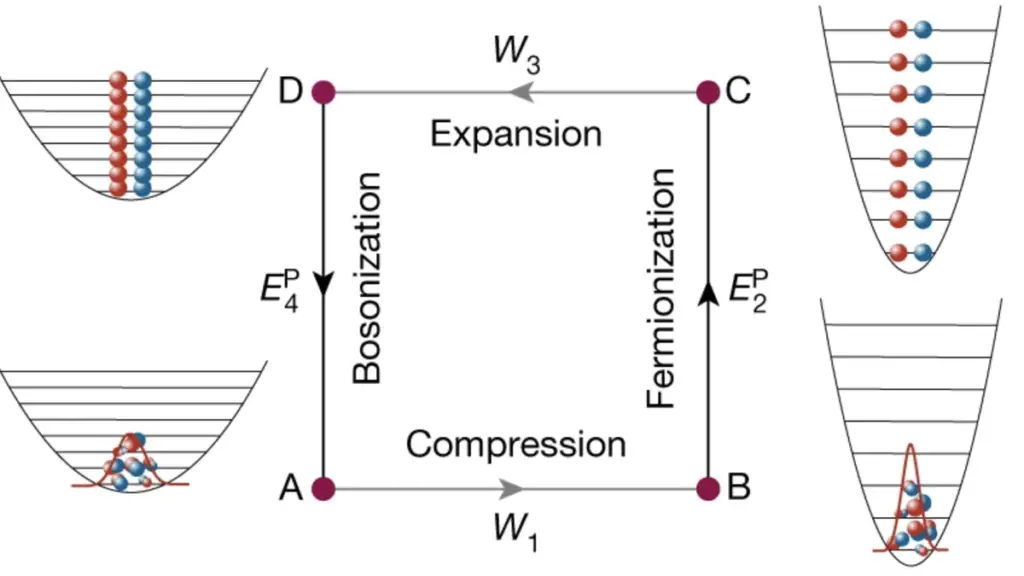Physicists in Germany have developed a groundbreaking device that can convert the energy difference between two quantum states of a group of atoms into work. This device, known as a quantum engine, applies the principles of classical engines to the subatomic realm and offers a new way to explore the emerging field of quantum thermodynamics while also potentially improving quantum computers.
At the heart of this innovation lies Pauli’s exclusion principle, which distinguishes subatomic particles as either fermions or bosons. Fermions are the basic building blocks of matter, while bosons are responsible for carrying the forces between these particles. When a collection of particles is cooled to nearly absolute zero, their quantum nature becomes prominent, and they strive to achieve the lowest possible energy state. However, due to Pauli’s exclusion principle, they are unable to occupy the same energy level.
Every particle in a system is characterized by four quantum numbers, which can be thought of as their unique identification numbers, similar to the Aadhaar numbers in India. These numbers collectively indicate the particle’s energy level. According to Pauli’s exclusion principle, no two particles in a given system can have the same four quantum numbers. Fermions adhere to this rule and progressively fill up the lowest available energy level until all levels are occupied. On the other hand, bosons are not bound by this exclusion principle and can occupy the same lowest energy level at extremely low temperatures, enabling phenomena like superconductivity.
The key idea behind the quantum engine is to convert a group of fermions into bosons and back. Researchers achieved this by cooling a gas of lithium-6 atoms, which can behave as either fermions or bosons if certain conditions are met, to just millionths of a degree above absolute zero. They then confined the atoms in a trap created by oscillating electric and magnetic fields.
Similar to classical engines that convert heat into work, the quantum engine follows a four-step cycle. In the first step, the trapped atoms are compressed and maintained in a bosonic state. Next, a small increase in the magnetic field’s strength causes the atoms to enter a fermionic state through interactions with the field. This transition forces the particles to move out of the lowest energy level and progressively occupy higher levels. The compression applied in the first step is then eased in the third step. Finally, the magnetic field’s strength is reduced back to its original value in the fourth step.
During the third step, the energy of the atoms increases, and this energy can be harnessed to perform work. The efficiency of the quantum engine is measured by comparing the energy released in the third step to the energy added to the system in the first step. The current quantum engine developed by the researchers boasts an efficiency of 25%, but they anticipate increasing it to 50% or higher in the future.
This breakthrough not only provides a platform for studying open questions in quantum thermodynamics experimentally but also has potential applications in computing. For instance, it could be used to cool the particles within a quantum computer, similar to how an air-conditioner uses an engine to cool a room. The researchers envision developing microscopic devices that can efficiently extract work from the quantum engine for this purpose.
However, it is important to note that the quantum engine is still in the proof-of-concept stage. The researchers have successfully demonstrated that their design can cyclically release energy as a group of atoms transition between bosonic and fermionic states. The next challenge is to devise a mechanism for transferring this energy from inside the trap to an external system. Potential solutions include coupling microscopic mechanical objects to the gas.
Overall, this discovery opens up new possibilities for exploring quantum thermodynamics and developing advanced quantum computing systems. The researchers hope to continue refining their quantum engine design and explore its potential applications in the future.

